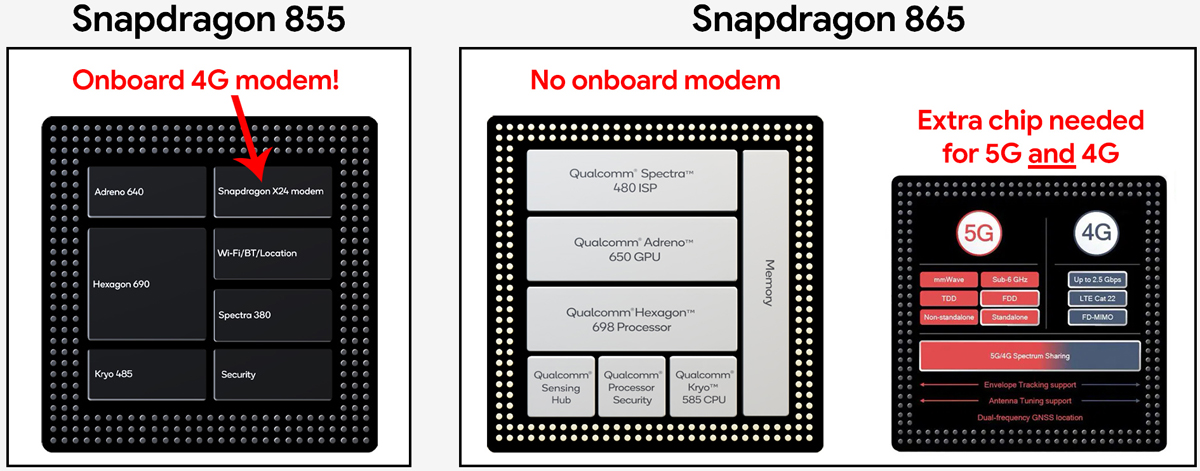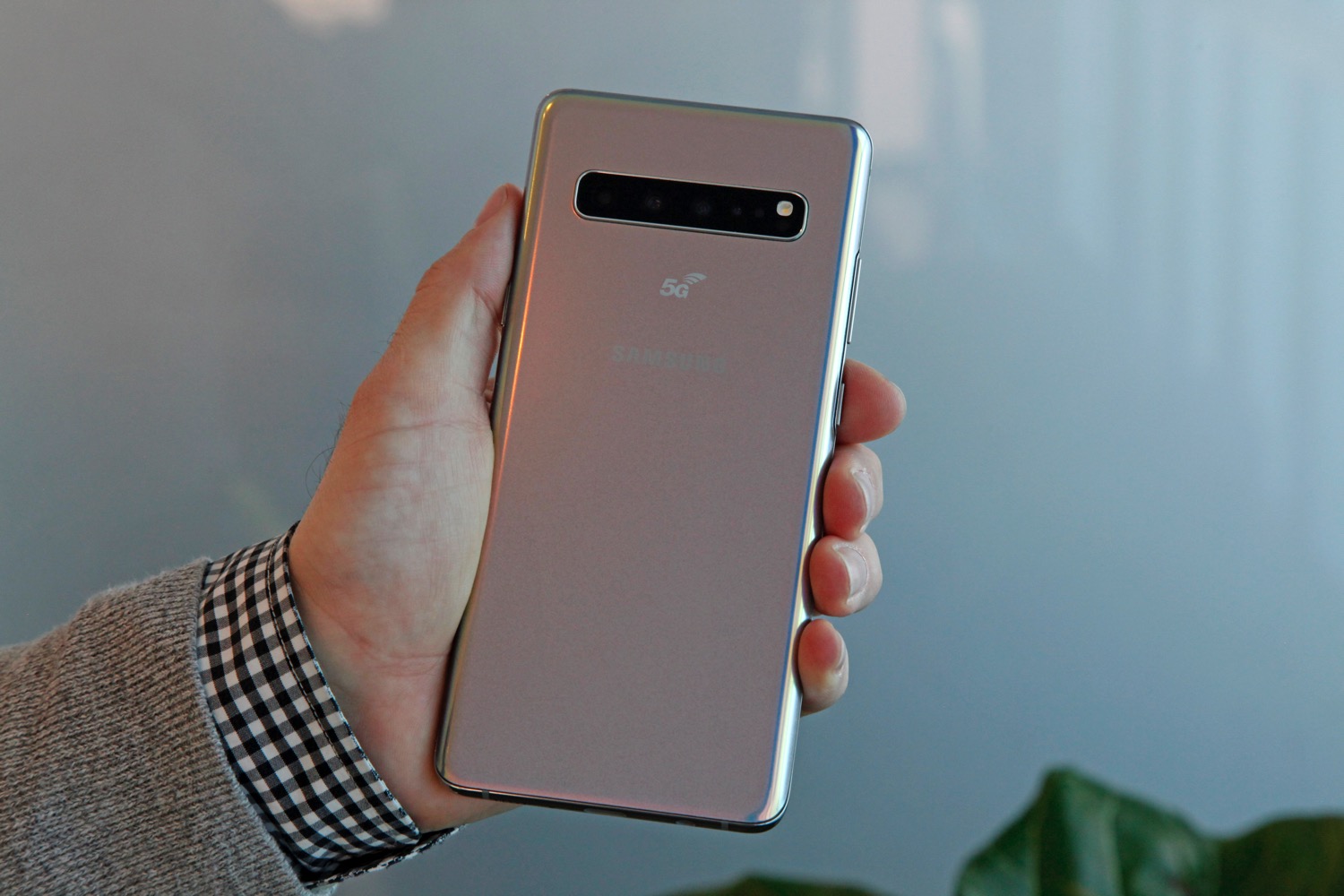The big picture: Qualcomm earlier this month announced its new flagship mobile processor. The Snapdragon 865 SoC certainly looks the part on paper, promising 25 percent better performance and improved battery life over its predecessor. Dig beyond the surface, however, and you'll stumble upon some pretty concerning design decisions.
As we mentioned in our initial coverage and as Ars Technica recently expanded on, Qualcomm's Snapdragon 865 SoC doesn't feature an integrated 5G modem chip in the main package. In fact, there is no onboard modem at all. Instead, an extra chip is needed for 5G and 4G operation of any kind.
Why is this a problem, you ask?
Allow Qualcomm to explain. In this 2012 press release on the benefits of integrating a 4G LTE modem into its Snapdragon S4 processor, the company said, "typically, the more chips that are involved in building a device, the more challenging it is to conserve battery life while maintaining performance."
In short, "consolidation means good things for your battery."

With the Snapdragon 865, Qualcomm disregarded that line of thinking. Not only will flagships running the Snapdragon 865 use a lot of power when tapping into 5G on this separate chip, they'll do the same when using the much more commonplace 4G LTE since Qualcomm moved the 4G modem off the main SoC, too. That's a head-scratching move, until perhaps, you consider that it'll mean that Qualcomm will sell even more chips now (all 865s will be accompanied by a separate modem chip now).
Worse yet is the fact that an additional physical chip leaves less space for other components like bigger batteries and will cost consumers more money.

The industry's solution, as we've already seen with early 5G-enabled handsets, is to simply go bigger. The Galaxy S10 5G is a perfect example as the 5G variant measures a hulking 6.7 inches diagonally. That extra size is needed for a bigger battery and to help dissipate heat, the latter of which is still apparently an issue for early 5G phones.
As Ars notes, it feels like Qualcomm is trying to rush 5G just like it did with 64-bit. 5G will still be in its infancy next year so the hurry isn't really justified - not enough to make next-gen flagships perform worse on 4G, anyway. Given the way the stars are aligning with the very real limitations of mmWave technology and the threat of bigger, hotter and more expensive handsets, 2020 may not be the year of 5G after all.
Galaxy S10 5G image courtesy BGR
